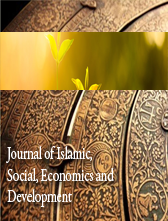WAQF TOURISM MODEL AS A DRIVER FOR TRANSFORMATIVE CHANGE IN TOURISM SECTOR DURING THE POST-COVID-19 OUTBREAK IN MALAYSIA: A CONCEPTUAL PAPER
Abstract
Prior to the Coronavirus Disease 2019 (or better known as COVID-19) pandemic, Malaysia’s tourism sector was the third-largest contributor to the country’s economy. However, the emergence of the COVID-19 pandemic has given a severe impact on the tourism sector besides the direct struggle of public health all over the world. In order to recover from this critical condition, transformation initiatives and supports are very much needed to ensure the sustainability and resilience of the industry. The over-dependence on the government to fund the industry has resulted in a lack of creativity and innovation of tourism products. Due to critical and limited budget availability, one of the innovative ways to reduce reliance on funding from the government is to utilize the waqf model to fund the tourism sector. Thus, this research aims to address how Waqf funding can help the tourism sector in Malaysia to reduce their critical expenditure. The proposed conceptual model is expected to serve as a tool that will help to transform the tourism sector to ensure the sustainability of the tourist attractions that mostly have been affected by the COVID-19 pandemic. Consecutively, it will enhance the government spending structure in reducing the overall spending and having the generation of income in the long run from the sustainable of tourism services and facilities which will then help the government to focus more on the other critical sectors.













